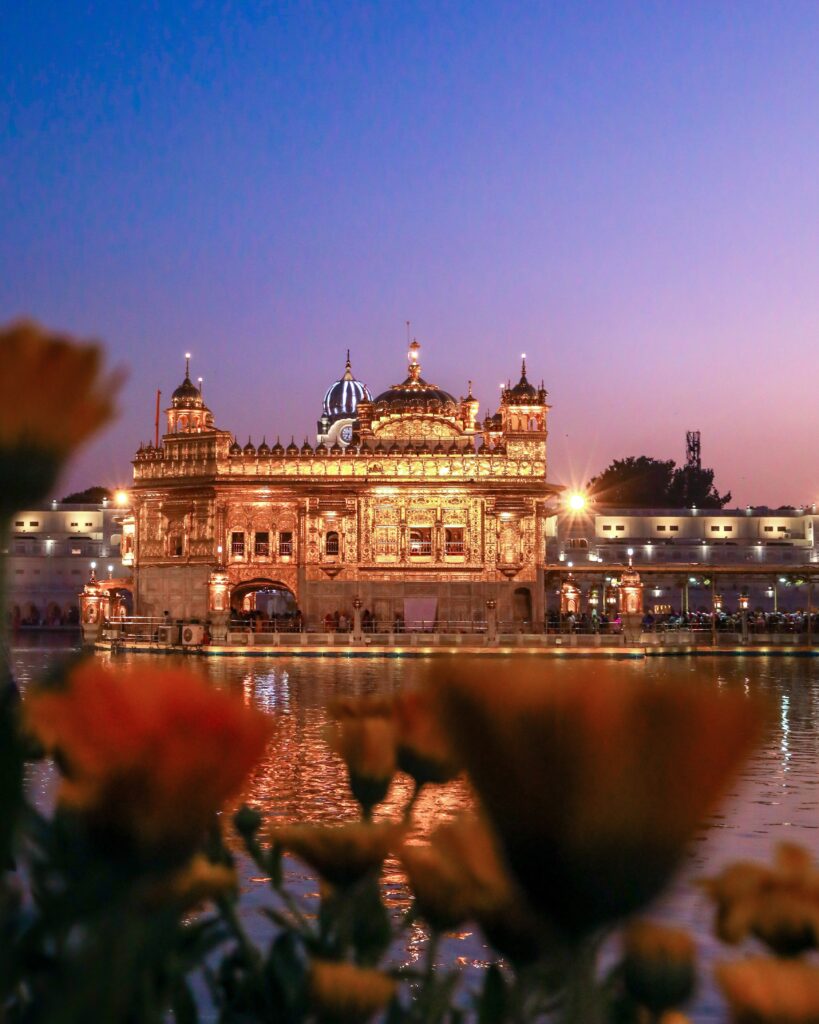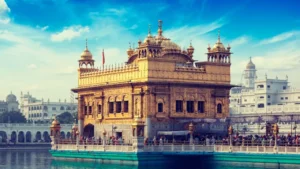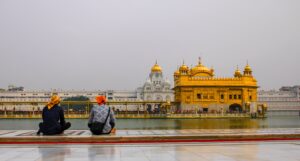The Harmandir Sahib in Amritsar is one of the most iconic and revered landmarks in India. Of course, most of us know of it as the Golden Temple! This central place of worship for the Sikh community attracts millions of worshipping Sikhs every year, and also people who wish to experience the spirituality of the temple itself and the community aspect it imbibes. Here are five things to know about this magnificent temple.

- A Symbol of Unity and Equality: The Golden Temple is a powerful symbol of unity and equality for the Sikh community. The temple was designed by Guru Arjan, the fifth Sikh Guru, to be a place of worship for all people, regardless of their caste, creed, or gender. The temple has four entrances, representing the openness and acceptance of all people, and serves free meals to anyone who visits, regardless of their background.
- The Golden Exterior: The Harmandir Sahib is nicknamed the Golden Temple for a reason – its exterior is covered in stunning gold plating that glows in the sun. Nearly 500 kilograms of gold was used in decking up the temple. The gold plating was added in the early 1800s and is a testament to the Sikh community’s devotion to their faith. The temple is surrounded by a large pool of water, called the Sarovar, which reflects the temple’s golden exterior, making for a breathtaking sight.
- Historical Significance: The Golden Temple has played a significant role in India’s history, particularly during the Indian independence movement. In 1919, British troops opened fire on peaceful protestors in the nearby Jallianwala Bagh, killing hundreds of people. The temple served as a refuge for many of the injured and wounded.
- The Kitchen and Community Service: Probably one of the most popular aspects of the temple is its community service and hospitality. The langar, or community kitchen, serves free meals to anyone who visits the temple, regardless of their background or religion. The kitchen is run by volunteers and serves around 100,000 meals every day. This act of service is a fundamental principle of the Sikh faith and is an inspiring example of selfless service to others. Visitors to the Harmandir Sahib can partake in the meals, and also assist in the aspects like cooking, cleaning produce, helping with the dishes or cleaning the common spaces of the temple.
- Spiritual Significance For Sikhs: Why is the Harmandir Sahib known as the most religious place in Sikhism? The temple houses the Guru Granth Sahib, the holy book of Sikhism, and is the site of the Akal Takht, the highest seat of temporal authority in Sikhism. Sikhs come from all over the world to visit the Golden Temple and seek spiritual solace and guidance.

In conclusion, the Golden Temple in Amritsar is a magnificent and revered landmark that holds great spiritual and historical significance. It is a testament to the Sikh community’s commitment to equality, community service, and selfless devotion to their faith. A visit to the Golden Temple is an experience not to be missed when staying at the Earth hotel in Amritsar, which is located less than 3km away from the temple.



